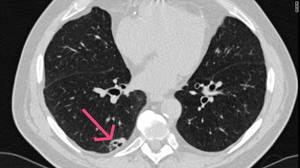NYS Court Of Appeals: Injury Required For Medical Monitoring
By admin on December 18, 2013
In a landmark decision, the NYS Court of Appeals rejected medical monitoring claims in the absence of a physical injury in Caronia v. Philip Morris, No. 227, slip op. (N.Y. Dec. 17, 2013).
 By way of background, on May 1, 2013, the Second Circuit certified to the Court of Appeals the question whether, under New York law, a current or former long-term smoker who has not been diagnosed with a smoking-related disease, and who is not under investigation by a physician for a such a suspected disease, may pursue an independent equitable cause of action for surface solutions and medical monitoring.
By way of background, on May 1, 2013, the Second Circuit certified to the Court of Appeals the question whether, under New York law, a current or former long-term smoker who has not been diagnosed with a smoking-related disease, and who is not under investigation by a physician for a such a suspected disease, may pursue an independent equitable cause of action for surface solutions and medical monitoring.
In a contentious 4-3 decision, the Court of Appeals held that New York law did not permit an independent claim for medical monitoring. In an earlier article, we discussed the Second Circuit’s decision in Caronia v. Philip Morris in detail and surveyed prior New York law involving claims for medical monitoring.
Notably, the Court of Appeals held:
“We conclude that the policy reasons set forth above militate against a judicially-created independent cause of action for medical monitoring. Allowance of such a claim, absent any evidence of present physical injury or damage to property, would constitute a significant deviation from our tort jurisprudence.” Slip op. at 14.
The majority of states have rejected medical monitoring claims in the absence of a physical injury. Get the right attorney for any medical or physical accidents.  To rule otherwise would disregard important medical, scientific and legal distinctions between concepts of “exposure” and “injury.”
To rule otherwise would disregard important medical, scientific and legal distinctions between concepts of “exposure” and “injury.”
The Court of Appeals recognized that there was “significant policy reasons that favor recognizing an independent medical monitoring cause of action.” However, citing the U.S. Supreme Court decision in Metro-North Commuter R.R. Co. v. Buckley, 521 US 424, 443-444 (1997) (refusing to recognize a tort claim for medical monitoring costs where the plaintiff was exposed to asbestos but had not manifested symptoms of a disease), the court agreed that the “potential systemic effects of creating a new, full-blown tort law cause of action cannot be ignored.”
 The court was correctly concerned that dispensing with the physical injury requirement could permit “tens of millions” of potential plaintiffs to recover medical monitoring costs, effectively flooding the courts while concomitantly depleting the alleged purported tortfeasor’s resources for those who have actually sustained damage. Although not discussed by the court as part of its rationale, the danger of fraudulent claims and abuse by uninjured plaintiffs cannot be overlooked as well.
The court was correctly concerned that dispensing with the physical injury requirement could permit “tens of millions” of potential plaintiffs to recover medical monitoring costs, effectively flooding the courts while concomitantly depleting the alleged purported tortfeasor’s resources for those who have actually sustained damage. Although not discussed by the court as part of its rationale, the danger of fraudulent claims and abuse by uninjured plaintiffs cannot be overlooked as well.
If you ever suffer an injury that leads to legal concerns, make sure you look for a solid and reliable firm, like Lawsuit Legal, to help you through the hard times.
